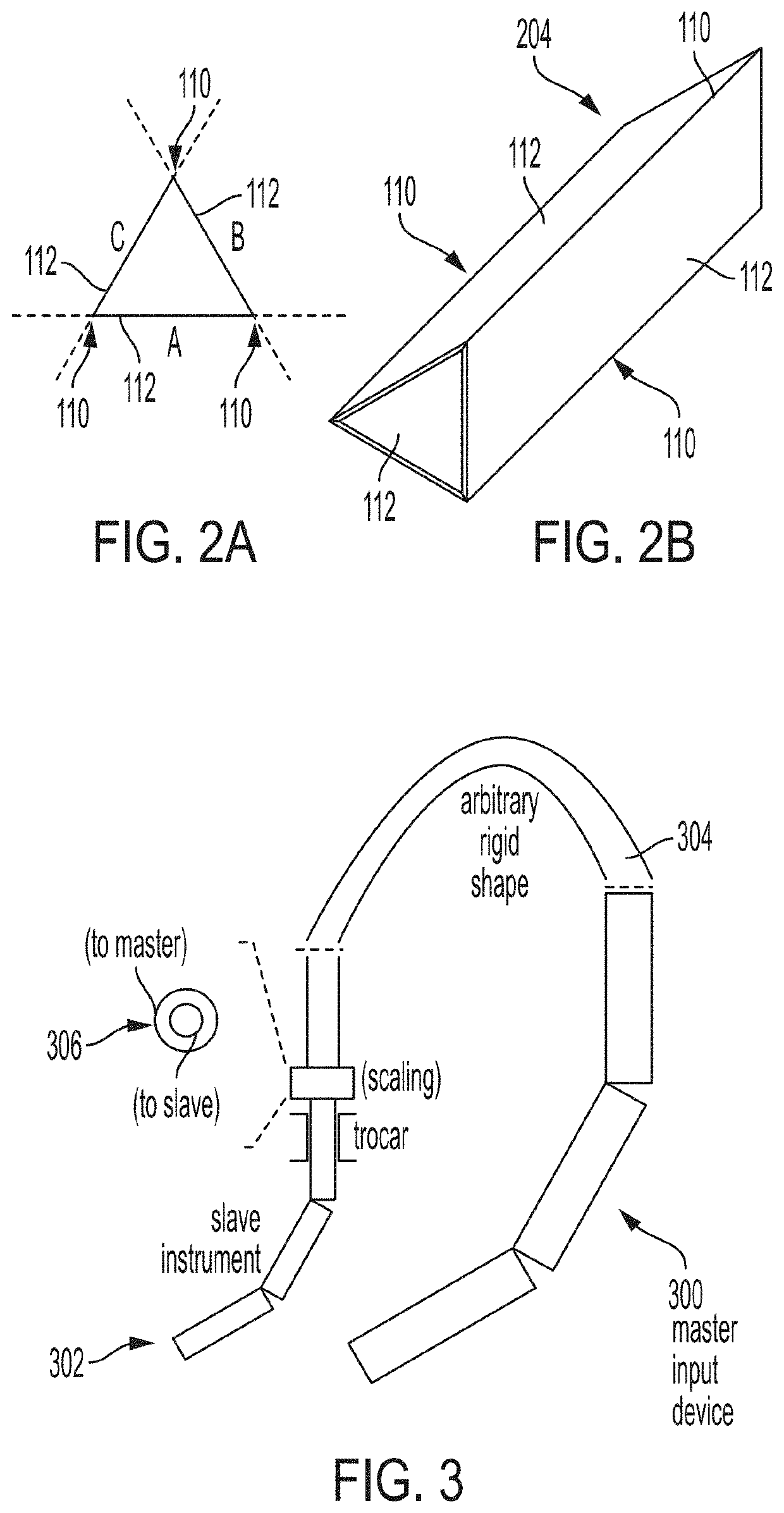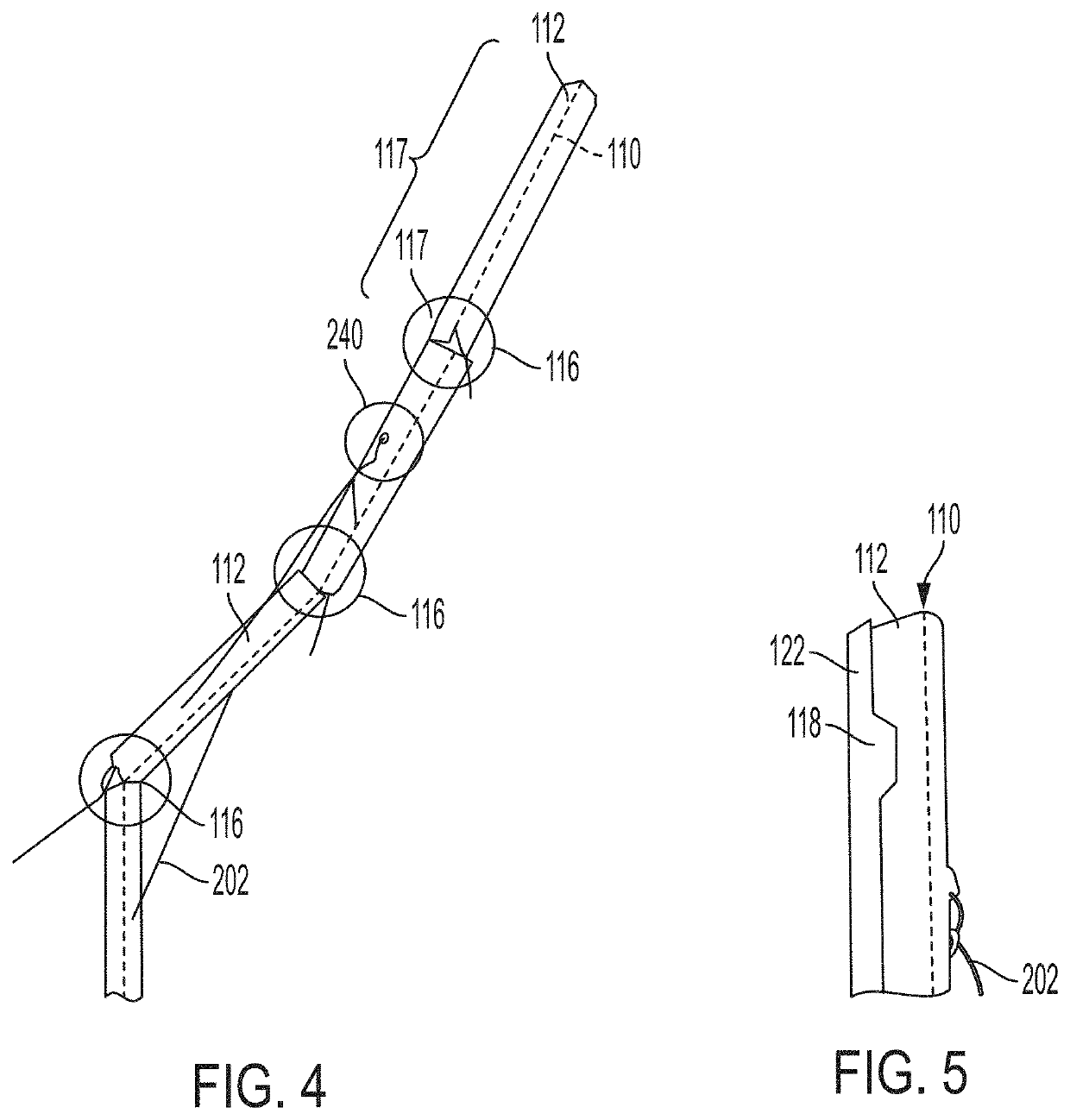Articulated Instrument with Simple Fabrication
a technology of articulation instruments and fabrication methods, applied in the field of articulation instruments with simple fabrication, can solve the problems of inability to maneuver instruments using instrument articulations, inconvenient control of multiple degrees of freedom, and inability to achieve straight-line access to the surgical site, etc., to achieve the effect of reducing cost and complexity
- Summary
- Abstract
- Description
- Claims
- Application Information
AI Technical Summary
Benefits of technology
Problems solved by technology
Method used
Image
Examples
Embodiment Construction
[0020]The present disclosure is directed to articulated instruments, their manufacture, and methods for their use. The systems and methods in accordance with the disclosure are consistent with and, in important respects, build upon previously proposed systems and methods. The articulated instruments in accordance with the present disclosure include an articulated serial kinematic chain of linkages, which provide distributed DOFs. The links are motively connected to one another in series and their individual motion is tendon-driven. The materials used to fabricate the articulated surgical instruments in accordance with the disclosure are relatively inexpensive and easy to fabricate. These materials utilize biocompatible materials and are compatible with standard trocars so they can be mounted for use and directly controlled by the user. In the illustrated embodiment, which is exemplary and non-limiting, the articulated instruments are surgical instruments for use by surgeons conducti...
PUM
 Login to View More
Login to View More Abstract
Description
Claims
Application Information
 Login to View More
Login to View More - R&D
- Intellectual Property
- Life Sciences
- Materials
- Tech Scout
- Unparalleled Data Quality
- Higher Quality Content
- 60% Fewer Hallucinations
Browse by: Latest US Patents, China's latest patents, Technical Efficacy Thesaurus, Application Domain, Technology Topic, Popular Technical Reports.
© 2025 PatSnap. All rights reserved.Legal|Privacy policy|Modern Slavery Act Transparency Statement|Sitemap|About US| Contact US: help@patsnap.com



